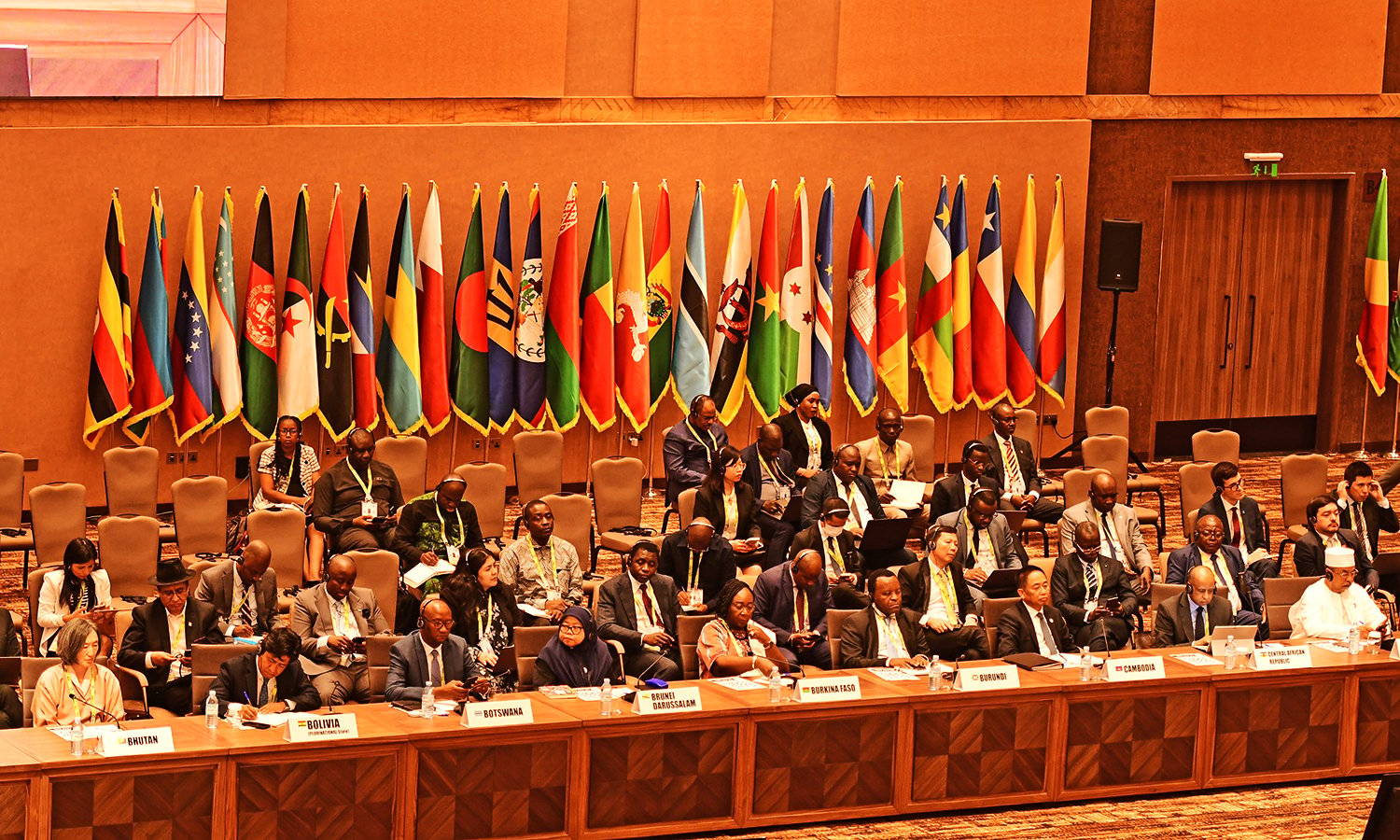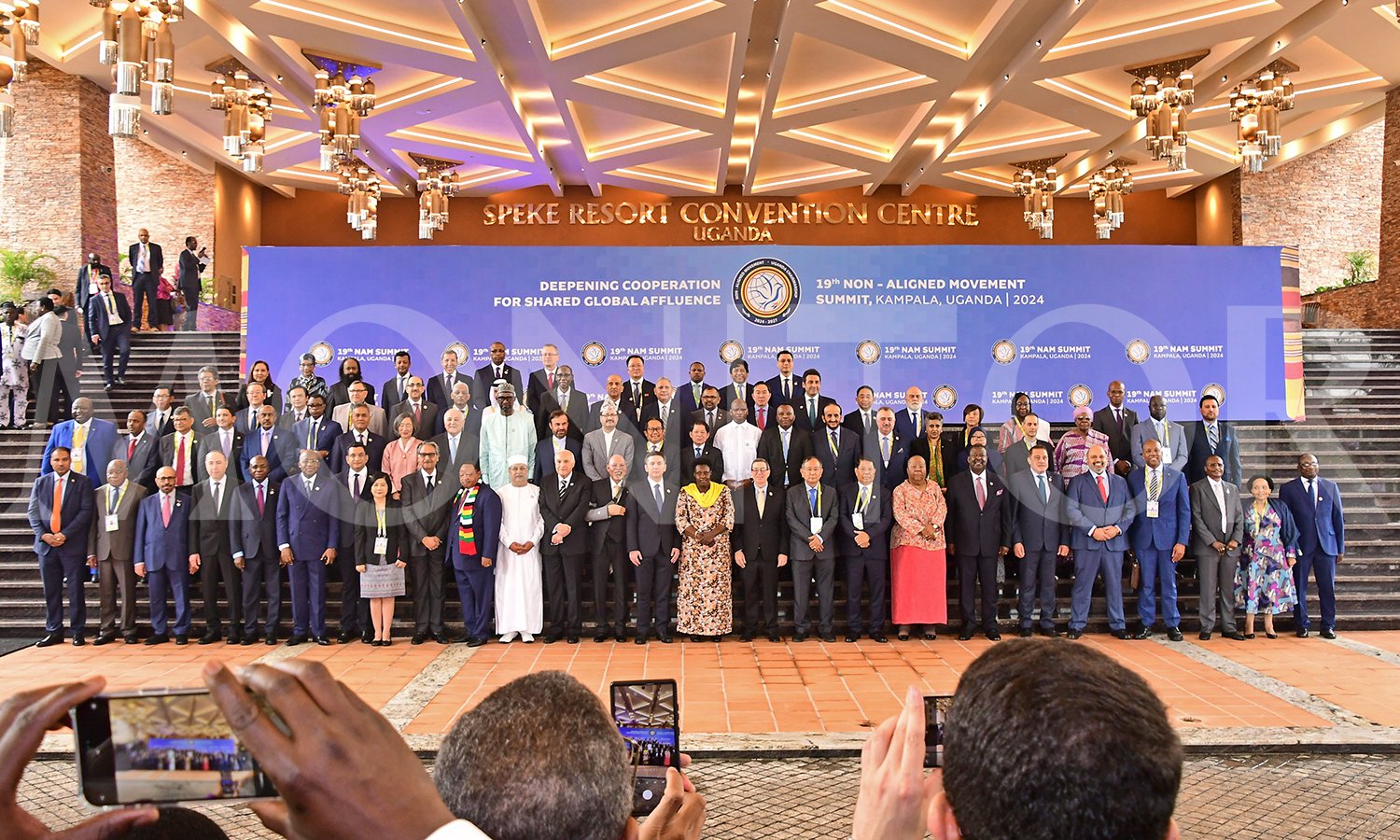Prime
How govt pulled off NAM summit amid challenges

Delegates attend the NAM summit at Munyonyo. PHOTO/ ABUBAKER LUBOWA
What you need to know:
- Government’s decision to partner with private businessman Sudhir Ruparelia to set up the Shs140b Convention Center, with a 44,000-seater auditorium, with breakaway rooms, was seen in the view that the undertaking would have been impossible if it was placed in the hands of a government contractor.
The 19th Summit of Non-Aligned Movement (NAM) closed yesterday with government reporting success, and few noticeable fumbles, at least for now, despite sticking challenges and a history that inspired little confidence in the country’s ability to pull off such a feat.
A total of 1,494 delegates from116 countries, 15 presidents descended on Kampala for the six-day summit hosted at the Speke Resort Convention Center in Munyonyo.
The NAM is the second largest grouping of Nations -120 in total- dedicated to addressing issues of developing countries.
When preparations started in 2019, following Uganda’s endorsement to host the summit in 2022, skepticism was ripe on whether Uganda would measure up to the intricacies of the diplomatic world, and logistical demands for such a high level meeting, especially on the backdrop of troubles that accompanied previous similar events like the 2007 Chogm.
Also of concern was the deteriorated infrastructure in the city as well as wanting and near absent Meetings, Incentives, Conferences and Exhibitions (MICE) facilities that are necessary for such big gatherings.
With this, the government would go into overdrive, especially in the last 10 months to ready itself.
Fast forward, guests were well handled, and the Final Document, which contains the outcome of the deliberations adopted in time, government says.
“We have had impressive feedback from corners you don’t expect, people who are from well to do countries that appreciated the organization and how we led them through the preparations of the summit,”Mr Vincent Bagiire, Permanent Secretary to the Ministry of Foreign Affairs and head of the secretariat and summit coordination said.
Sources in government have revealed a streamlined approach that enabled this, including direct intervention of President Museveni, who issued strict orders for the delivery of the summit.
Mr Bagiire told this publication that focused preparation, elite leadership and lessons from past mistakes helped
“We had good leadership in the team leader…who paid attention to detail. We reflected on lessons of past summits were we went wrong, what we needed to do better,” he said
President Museveni in February 2023, named the head of Public Service and Secretary to Cabinet, Ms Lucy Nakyobe, as the Chief executive officer of the National Organizing Committee that spearheaded preparations. His decision followed an embarrassing encounter with some government officials who had earlier been in charge, this publication reported.
Ms Nakyobe was deputized by Uganda’s permanent representative to the United Nations, Ambassador Adonia Ayebare. Sources say putting experienced individuals in charge and relegating politicians to ceremonial roles like receiving guests was crucial in eliminating the ping pong and drama that characterizes political decisions.
Throughout the week-long events at Munyonyo, Ms Nakyobe was seen at site, involved to ensure smooth running of the summit. By press time, she was unable to delve into details, telling our reporter: “right now there are a number of things I am arranging,”
The creation of the committee eliminated coordination troubles that had earlier characterized the preparations, including conflicting budgets by MDA’s.
The election of the committee also saw the initial budget of the organization slashed by nearly half. Plans to purchase cars worth Shs70b to transport delegates as planned by the Ministry of Works were stopped, as the government elected to withdraw SUVs from government officials.
Specific committees were set up to oversee different aspects of the summit, with strict terms of reference, Mr Bagire revealed
“Those terms were referred to almost consistently for nearly eight months to make sure we perfect what we had to do. The committees did dry runs to ensure whet they were going to do is water tight,” he said
Each delegation was allocated a liaison officer to attend them, and a military liaison officer in case of a head of State handed to them ahead of arrival. The organisers also conducted three trainings for the protocol officers, and the transport team to ensure everything is seamless.
On the side of deliberations and negotiations, this publications learnt experienced and top brains in were selected to lead and support the preparation of the document
“Most importantly, the substance of the summit in terms of preparing what the delegates were going to discuss. We put a lot of effort in studying the outcome document and making sure we understand the nuances among the different stakeholders to ensure that when the negotiations start, they are smooth,”Mr Bagiire said
“Before the summit happened, we had two or three advance teams. We prepared the ambassadors of NAM member states, we invited advance teams and gave them as much information to the extent of what to expect, what their courtesies were,” he added
Government’s decision to partner with private businessman Sudhir Ruparelia to set up the Shs140b Convention Center, with a 44,000-seater auditorium, with breakaway rooms, was seen in the view that the undertaking would have been impossible if it was placed in the hands of a government contractor.
“It is an urgent project, and a lot of money is needed which will be difficult for the government [to muster at short notice]. [The] government does not have all the money. There are many things we have to do; so, if we find a partner, it is easier,” Finance Minister Matia Kasaija said at the start of the project
Two days to the summit, the government reported the Centre as “usable” despite pending works. On Day one, the opening plenary session of senior officials was punctuated by sound glitches, with some delegates waiting several seconds for alternative microphones.
“Brand new things are always good but they have their own teething issues,” Mr Ayebare said, adding, “I am sure the microphones will be fixed by the time the Economics and Social Committee returns,”
The task now lies ahead to define the public stake in the center, where it has invested billions of shillings.
A similar arrangement between the two parties back in 2006 remains a point of contention to date. In 2010, Sudhir told Parliament’s Public Accounts Committee (Pac) that Shs13b that the government injected to build a marina and roads at his Commonwealth Resort in Munyonyo was unsolicited, and non-income generating, since it simply upgraded his existing marina.
In the thick of things, the Kampala Capital City Authority (KCCA) found the means to fix major routes that were to be used by the guests, even as major parts of the city remain near unmotorable.
Responding to concerns that scandals that unfolded after the Chogm may surface,, Mr Bagiire said : “I can’t say it won’t happen, because I account for one section: foreign Affairs, but I can say that we have tried as much as possible to ensure things are done correctly and all regulations are followed,”
In the midst of all this, public sentiments revel that these last minutes acts to safe face paint a picture of a leadership less concerned about its population as well as the lack of proper planning that sees the country sleepwalking into major events
“It is a shame that we only do such things to impress guests and only at the last minute,” a Ugandan shared on X.
With the closure of the summit yesterday, Uganda became the fifth country to host the summit after South Africa, Zimbabwe, Algeria and Egypt. The takeaway as per one social media user-“we can actually do this stuff,”




